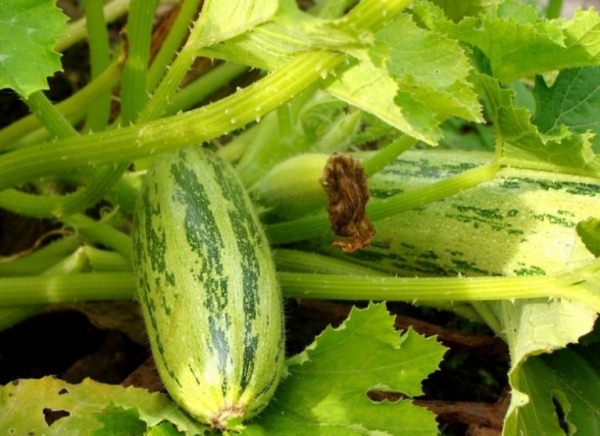Squashes are early ripe vegetables of the pumpkin family. The culture is unpretentious, but, despite this, loves an abundance of light and moisture. Despite the resistance to low temperatures, experienced gardeners recommend growing zucchini in a greenhouse or greenhouse.
Table of contents
The advantages of growing in a greenhouse
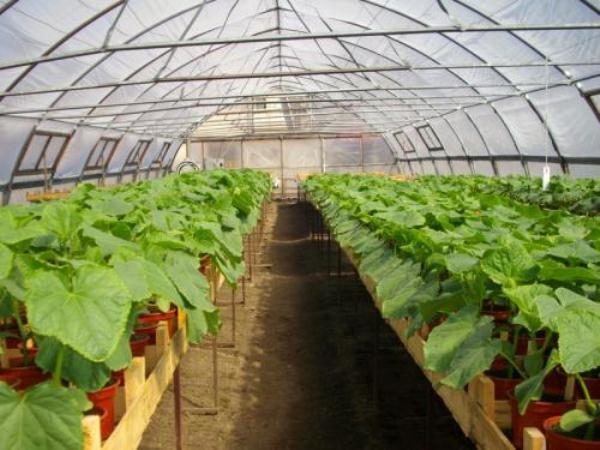
The advantages of this type of cultivation include the following:
- gentle taste qualities;
- reduction maturity;
- boost yield;
- opportunity growing early varieties on an industrial scale;
- high profitability;
- low probability pest damage and diseases.
Varieties of squash recommended for greenhouses
For greenhouses best hybrids are suitable. They are not only distinguished by high yields and excellent taste, but also take up very little space. The most common are:
Belogor
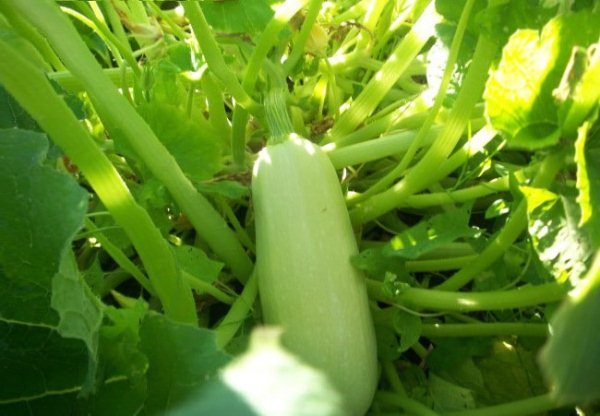
High-yielding variety of early aging. Fruits are medium in size. The flesh is quite dense with a delicate taste. Suitable for preservation and for fresh use.
Kavili

Treats early ripe grades. Possesses oblong fruits of white-green color. The flesh is dense, without a bitter taste. Used for cooking soup, stews, canning.
Kaund
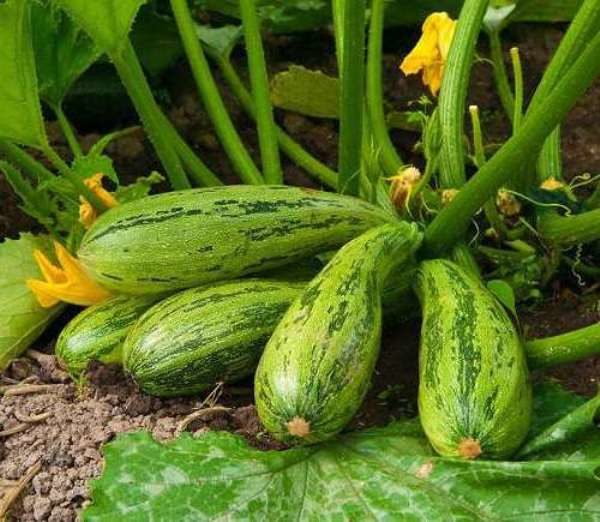
High-yielding, early ripe grade. Fruits are medium size, even. The flesh is greenish-white, tender, dense, juicy.
Terms of planting seedlings in the greenhouse
Experienced gardeners noticed that the timing of planting seedlings in greenhouses is different. They directly depend on the place of growth:
- for Moscow the optimal landing time is May 5–10;
- for Siberia - May 15–20;
- for Krasnodar region - April 10-15.
Basic requirements for greenhouses
For the cultivation of zucchini fit both polycarbonate greenhouses and conventional film greenhouses. If you plan to grow in the winter, in this case, the greenhouse should be on the foundation, and covered with glass. The optimal size is 45-50 sq. meters Height does not matter. For airing the greenhouse must be equipped with vents. In a greenhouse covered with glass, a wood stove or an electric boiler can be used for heating. The greenhouse, covered with polycarbonate, can be heated with the help of heaters.
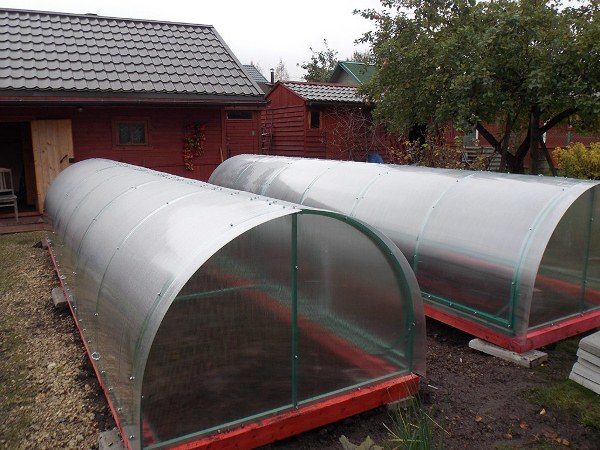
Especially loved zucchini biofuels. It warms the roots of plants well and acts as a food that improves the growth of seedlings. To make it you will need:
- rotted mullein or swine manure;
- straw.
Mix mullein with straw in the same quantity, put in a heap, plentifully watered and left alone under the film cover on 3-4 of the day. Then, in the greenhouse, the soil is removed, the biofuel is placed in a thin layer and the top layer of soil is poured on top. The resulting cushion emits carbon dioxide, which warms the roots of plants and promotes good growth and improved taste of zucchini.
Features of growing
It is best to grow zucchini seedlings. Seeds on seedlings are planted in early March. Before sowing the seeds must be prepared:
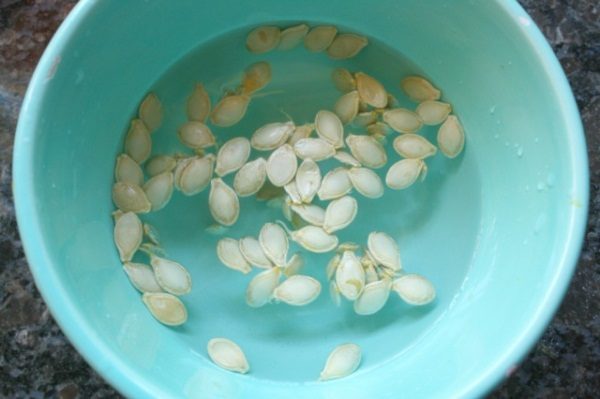
- Pour seeds with hot water. The water temperature should be + 45-52 degrees. To sustain for 5-7 hours.
- Lower on 2 minutes into ice water. This procedure is performed in order to prevent fungal diseases.
- Wrap the seeds in a damp cloth and leave for 48 hours in a room with a temperature not lower than 23 degrees. It is necessary to keep the fabric wet all the time.
Growing seedlings
When the seeds have passed the stage of preparation, proceed to planting. For planting zucchini it is necessary to prepare a special soil. For this we need:
- garden land - 7 parts;
- peat - 5 parts;
- mullein - 3 parts;
- ash —150—200 grams;
- superphosphate - 30-40 grams;
- ammonium nitrate - 25-40 grams.
The diameter of the pot should be 10 cm. The depth of planting should not exceed 3 cm. You can plant 2 seeds in a pot. After sprouting, leave one more strong sprout. When planting the pot is recommended to fill with soil only half. After planting, the seeds are watered slightly to ensure good contact with the soil. Before the appearance of the first shoots the temperature in the room should be +26-28 degrees
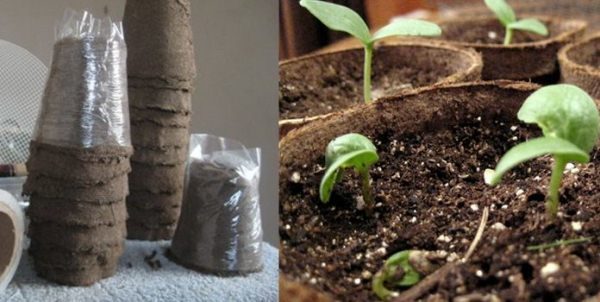
After the appearance of sprouts, the seedlings are transferred to a bright room with a temperature: in the daytime - + 17-18 degrees, and in the night - + 12-14 degrees. Such a temperature regime is observed for 4 days in order to allow the seedlings to get stronger. Then the temperature during the entire growing period is maintained depending on weather conditions:
- in case of cloudy weather - + 21-22 degrees;
- in sunny weather — + 26–28 degrees;
- at night - + 17-18 degrees.
Through 10-12 days after landing, ground in peat cups should be poured. In this case, the stem gently twist like a corkscrew.So that only the bottom leaves are left on the surface.
Watering the seedlings is recommended as the soil surface dries.
If the seedlings are grown on a windowsill, it is important to consider the following features of the lighting:
- window sill, located on the south side, does not require additional lighting;
- west, east side - light day at least 11 hours;
- north side - installation of additional lighting is necessary.
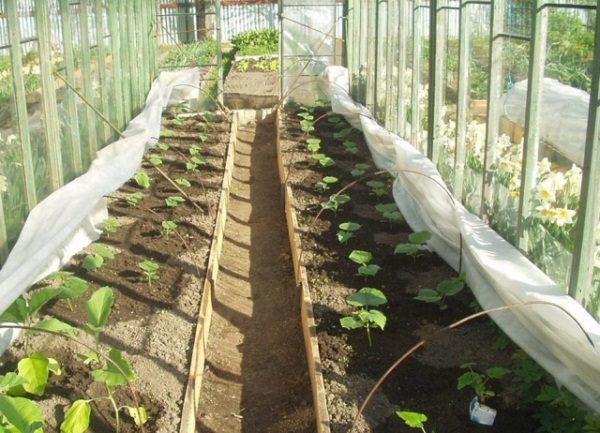
When 3-4 leaves grow on seedlings (in 20-25 days), they are transplanted into greenhouses. It is recommended to warm up the greenhouse before planting seedlings. Landing perform square-breeding method. Between the rows should be 50-72 cm. The well is watered, planted seedlings and sprinkled with earth to the first sheets. After transplanting seedlings, the temperature in the greenhouse should be in the range of 14-15 degrees. Air with careful precaution so as not to significantly lower the temperature.
Care
In order for plants to grow strong and give a rich harvest, proper care is needed, which in turn will prevent squash diseases. It is important to observe the following rules:
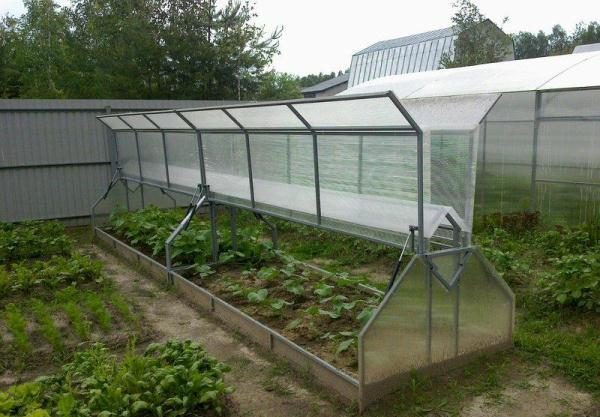
- Watering plants should be at room temperature.(+ 19-24 degrees) is not often, but abundant. In late April - early May, increase the amount of watering and the frequency of airing the greenhouse.
- Do not create high humidity in the greenhouse. Squashes do not like this.
- Feed should be done every 10 days. For top dressing, in 1.5 liters of fresh cow manure is diluted in 10 liters of water.
- Bush should not pinch and shape.
- To reduce the evaporation of moisture, the surface of the soil sprinkle with sawdust or peat.
- Greenhouse frames are removed as soon as frosts stop.
- If the bush is very thick, It should be cut with a knife of the leaves in the middle of the bush. This will provide additional air penetration and facilitate access to the flowers for insects that pollinate the plant.
Harvesting
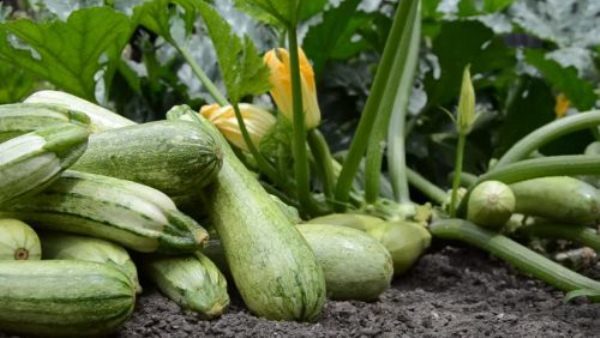
When harvesting it is recommended to adhere to the following rules:
- Harvest should be harvested when fruits reach length 20-25 cm and 8–10 cm in diameter (45–50 days after transplanting).
- Stop watering 7 days before harvest. This will prevent excessive squash wateriness.
- In the midst of ripening zucchini recommended collect every two days.
- Deformed fruits removeto keep the power of the plant.
- Overcooked zucchini clean, to enable new ovaries to form.
- When picking fruits It is important not to damage them. When damaged, they lose their appearance and reduce storage time.
In various forums, gardeners leave their reviews and comments. Here are some of them:
Stanislav. Very satisfied with the greenhouse method. Squashes are almost not exposed to diseases. Harvest is collected from the very beginning of spring and right up to late autumn.
Raisa I see no reason to plant squash in a greenhouse in the form of seedlings. I plant seeds and they quickly catch up with seedlings. The rest of the greenhouse happy.
Vitaly, Krasnodar. He built his business on growing zucchini in greenhouses. Growing is not difficult, not a lot of costs. I recommend to everyone…
Observing these not complicated recommendations is quite easy to grow zucchini in the greenhouse. Besides This method does not require large investments therefore, it can be a good business for gardeners and generate significant profits.
